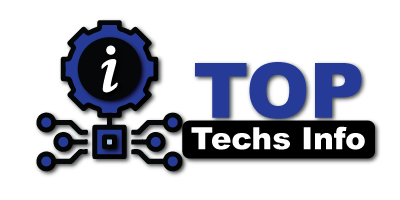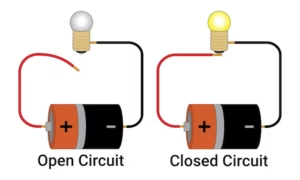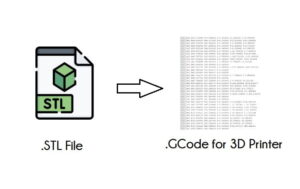Introduction
Education is at the heart of every thriving society, but in a world where technology evolves rapidly, how do learning institutions keep up? The answer for many is Microsoft Azure. From Singapore’s bustling urban schools to smaller institutions, cloud computing is reshaping how education is delivered. But what exactly is Microsoft Azure, and how is it empowering Singapore’s schools? In this article, we’ll dive deep into how Microsoft Azure is transforming education in Singapore, from fostering collaboration to enhancing data security and more.
Understanding Microsoft Azure
Let’s start with the basics—what exactly is Microsoft Azure? Azure is Microsoft’s cloud computing platform, offering a wide range of services like storage, networking, analytics, and virtual computing. Think of it as a massive digital toolbox that helps businesses, governments, and educational institutions streamline their operations.
The Role of Cloud Computing in Education
Cloud computing has revolutionized how we approach education. Gone are the days when schools relied solely on physical servers and textbooks. With cloud platforms like Microsoft Azure, learning institutions can now offer students and teachers the flexibility to access resources from anywhere, at any time. It’s not just about convenience—cloud computing makes education more inclusive, efficient, and scalable.
Evolution of Technology in Learning Institutions
Education and technology have always been intertwined. However, the speed at which technology has evolved in recent years has been remarkable. From chalkboards to smartboards, and now to entirely virtual classrooms, the way students learn has drastically shifted. Microsoft Azure is at the forefront of this evolution, providing the tools needed for modern, digital-first learning environments.
Why Cloud Solutions Like Microsoft Azure Matter
So, why is cloud computing important in education? Simple—schools need solutions that are flexible, scalable, and secure. Microsoft Azure offers schools the opportunity to reduce IT costs, increase productivity, and provide students with a modern learning experience. It enables educators to spend less time dealing with technical issues and more time focusing on what truly matters: teaching.
Microsoft Azure’s Unique Features for Education
Microsoft Azure isn’t just another cloud computing platform. It comes packed with features designed specifically for the educational sector. From security to collaboration, it brings a comprehensive suite of tools that schools can leverage to enhance both teaching and learning experiences.
Scalability and Flexibility in Learning Environments

One of the key strengths of Microsoft Azure is its scalability. As schools grow or adapt to changing circumstances (such as an unexpected pandemic), Azure allows them to scale up or down without a hitch. This flexibility ensures that schools can meet the needs of students without overspending on physical infrastructure.
Security and Data Privacy
In an age where data breaches make headlines almost daily, the security of student and institutional data is paramount. Microsoft Azure places a heavy emphasis on privacy and security. Schools using Azure can rest easy knowing that their data is protected by some of the most advanced cybersecurity measures available.
Collaboration Tools for Students and Teachers
Collaboration is at the heart of learning, and Microsoft Azure makes this easier than ever with tools like Microsoft Teams. Teachers can hold virtual classrooms, students can work on group projects, and all of this can happen seamlessly in a secure environment. No matter where students are, they can still connect and collaborate just as if they were in the same room.
How Microsoft Azure is Empowering Singaporean Schools
Singapore has long been recognized for its forward-thinking approach to education, and with the help of Microsoft Azure, the country is taking that commitment to the next level. From primary schools to universities, Azure is transforming how students learn and how educators teach.
Case Studies: Successful Implementation in Singapore Schools
Several schools in Singapore have already implemented Microsoft Azure with great success. For example, schools have reported increased engagement, improved digital literacy, and enhanced data security. This isn’t just a trend—it’s a fundamental shift in how education is delivered.
Reducing the Digital Divide
One of the most significant impacts Microsoft Azure has on education in Singapore is its ability to reduce the digital divide. By providing affordable, scalable solutions, Azure ensures that students from underfunded or rural schools have access to the same high-quality resources as their peers in urban areas.
Enhancing Learning Through AI and Analytics
Microsoft Azure goes beyond just storing data and offering virtual classrooms. It incorporates artificial intelligence (AI) and advanced analytics to provide tailored learning experiences. With these tools, teachers can track student progress, identify areas for improvement, and create personalized learning plans for each student.
Personalized Learning Experiences
Personalized learning has become a buzzword in education, and for a good reason. Not every student learns the same way, and with Azure’s AI capabilities, educators can create tailored lesson plans that cater to individual learning styles. This leads to better engagement and improved learning outcomes.
Data-Driven Insights for Administrators
For school administrators, Microsoft Azure offers invaluable insights through its data analytics tools. Administrators can use this data to make informed decisions, such as identifying which teaching methods work best or spotting trends in student performance. It’s like having a crystal ball for school management, but way more reliable.
The Future of Education with Microsoft Azure
As we look to the future, it’s clear that cloud computing, and platforms like Microsoft Azure, will continue to play a crucial role in education. The capabilities of these platforms will only expand, providing even more tools for schools to enhance the learning experience.
Preparing Students for a Cloud-Based World
In today’s job market, cloud computing skills are in high demand. By using Microsoft Azure, schools are not only enhancing education but also preparing students for the future workforce. Familiarity with cloud platforms will give students a competitive edge in many industries.
Sustainable Solutions for Green Education
Beyond the immediate benefits to students and teachers, Microsoft Azure also promotes sustainability. By moving away from physical infrastructure and embracing virtual solutions, schools can significantly reduce their carbon footprint. It’s a win-win for both education and the environment.
Conclusion
Microsoft Azure is more than just a cloud platform—it’s a transformative tool for modern education. In Singapore, its impact is evident across a wide range of learning institutions. From offering scalable solutions to enhancing security and promoting collaboration, Azure is changing the face of education. As we move forward, the role of cloud computing in education will only grow, and Microsoft Azure will continue to lead the way.



















